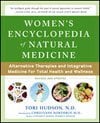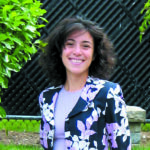Stacie Deyglio, ND
 Currently about one-third of Americans use natural medicines to heal and maintain health, and 75% of these people are women. Women today are challenging their doctors to have a willingness to explore and combine natural and conventional medical practices. The result is creating a conduit between the two schools of thought presently known as integrated medicine. The influence of women’s voices is shifting the paradigm of medicine, requiring women to become proactive in their role as patients as well as demanding that they be provided safe, effective approaches to maintaining and healing their bodies.
Currently about one-third of Americans use natural medicines to heal and maintain health, and 75% of these people are women. Women today are challenging their doctors to have a willingness to explore and combine natural and conventional medical practices. The result is creating a conduit between the two schools of thought presently known as integrated medicine. The influence of women’s voices is shifting the paradigm of medicine, requiring women to become proactive in their role as patients as well as demanding that they be provided safe, effective approaches to maintaining and healing their bodies.
Dr. Hudson highlights two guiding principles in her book, Women’s Encyclopedia of Natural Medicine. The first is that of resonance: “I believe the most profound healing principle in the practice of medicine is the principle of resonance, not whether the medicine is natural or synthetic, alternative or conventional, or a naturopathic philosophy vs. conventional allopathic philosophy. The healing method is the medicine that is right for that person. The true goal of a physician is to perceive what is resonant with that individual” (p. xix). In tune with this philosophy, Dr. Hudson’s book provides concise and comprehensive information including both sides of the medical scale – conventional and natural approaches to women’s health issues.
Her second guiding principle is “choice. Each patient chooses what is right for her. The doctor’s role is to educate about the health problem, about the options, including their pros and cons, and to share resources. The goal is to provide the context in which the patient can make an informed decision” (p. xix).
Given both guiding principles of Dr. Hudson’s philosophy on medicine, she exceeds the naturopathic principle of Docere. Women’s Encyclopedia of Natural Medicine is an educational resource for women and their doctors that encourages self-responsibility for health. The wisdom encompassed in the book is ideal for women learning about their healthcare options as well as for medical practitioners who seek to broaden their approach to meet their women patients’ evolving needs. By acknowledging the therapeutic value inherent in the doctor-patient relationship, Dr. Hudson plays a positive role in the re-education of the lay public.
 The second edition of Dr. Hudson’s book yields many updates from the first edition of 1999. The 2008 version includes revised research in herbal and nutritional therapies, expanded emphasis on exercise therapeutics as well as updated sections on conventional medicine approaches to the women’s health issues discussed. Such women’s health issues are composed in 20 chapters that range from abnormal uterine bleeding and cervical dysplasia to interstitial cystitis, menopause and vaginitis. Worthy to note are the five appendixes, which discuss: a general exercise program, body mass index, hormone replacement therapy, procedures and practices, recommended screening tests and immunizations.
The second edition of Dr. Hudson’s book yields many updates from the first edition of 1999. The 2008 version includes revised research in herbal and nutritional therapies, expanded emphasis on exercise therapeutics as well as updated sections on conventional medicine approaches to the women’s health issues discussed. Such women’s health issues are composed in 20 chapters that range from abnormal uterine bleeding and cervical dysplasia to interstitial cystitis, menopause and vaginitis. Worthy to note are the five appendixes, which discuss: a general exercise program, body mass index, hormone replacement therapy, procedures and practices, recommended screening tests and immunizations.
 Stacie Deyglio, ND received her baccalaureate degree in biology with a minor in chemistry from the College of Mt. St. Vincent in New York. Her personal health issues paved the way to discovering naturopathic medicine in 1999. Resonating with the philosophy and principles of naturopathic medicine, Dr. Deyglio graduated from the University of Bridgeport, College of Naturopathic Medicine in 2003. As a medical student, she was involved in student government, fundraising and the generation of two successful student-run health fairs. Dr. Deyglio’s interests include relating integrative therapeutics to the health of pediatric and geriatric populations. Currently residing in Phoenix, Dr. Deyglio is an avid bookworm, and is actively creating her practice.
Stacie Deyglio, ND received her baccalaureate degree in biology with a minor in chemistry from the College of Mt. St. Vincent in New York. Her personal health issues paved the way to discovering naturopathic medicine in 1999. Resonating with the philosophy and principles of naturopathic medicine, Dr. Deyglio graduated from the University of Bridgeport, College of Naturopathic Medicine in 2003. As a medical student, she was involved in student government, fundraising and the generation of two successful student-run health fairs. Dr. Deyglio’s interests include relating integrative therapeutics to the health of pediatric and geriatric populations. Currently residing in Phoenix, Dr. Deyglio is an avid bookworm, and is actively creating her practice.


